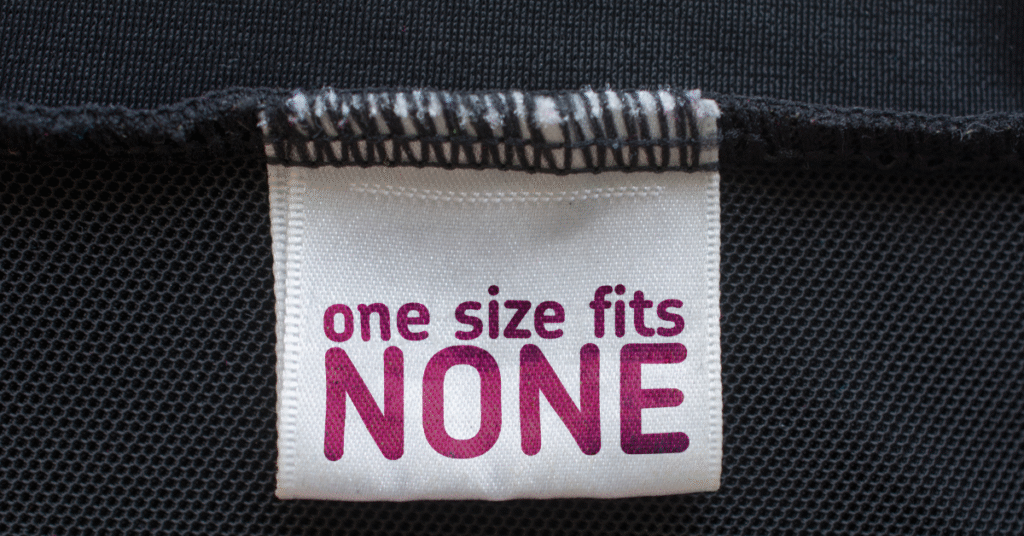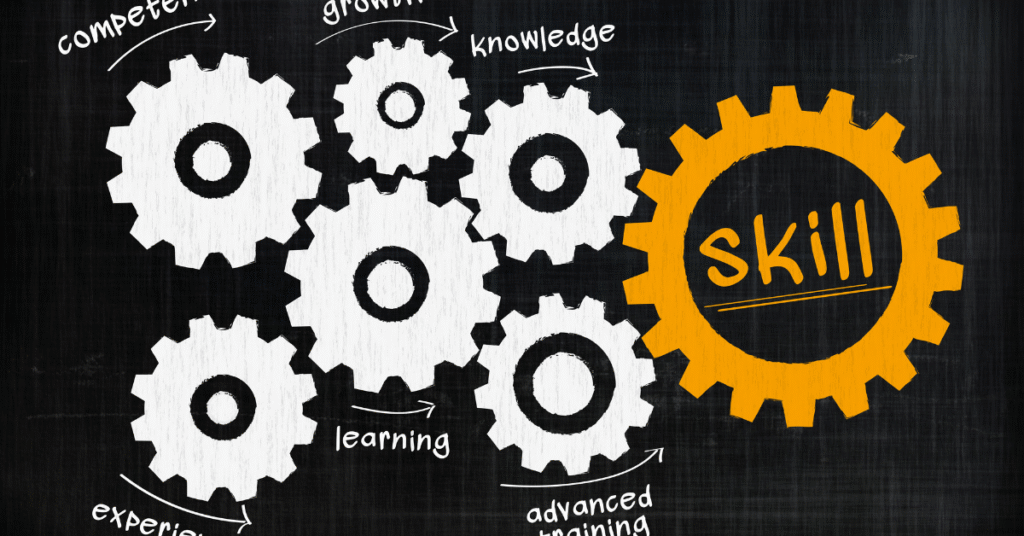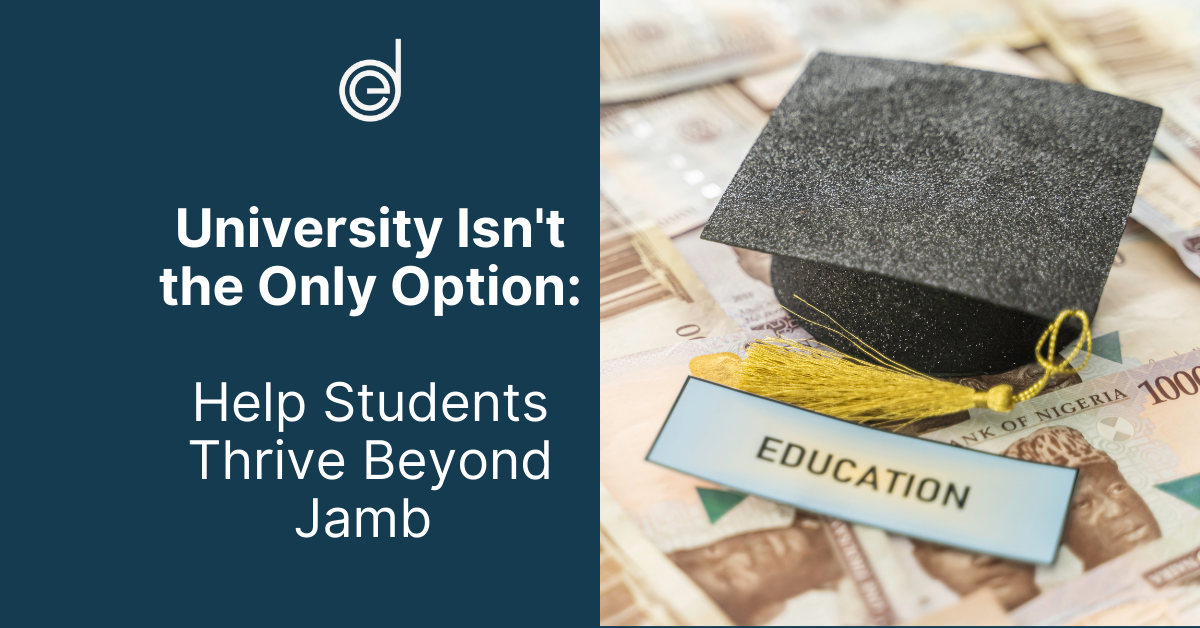Introduction: University Isn’t for Everyone — And That’s Okay
The recently released 2025 JAMB UTME results have sparked widespread concern. Out of approximately 1.95 million candidates, over 78% scored below 200 out of a possible 400 points, with only 0.63% achieving scores above 300. This marks one of the poorest performances in recent years.
As educators, it’s crucial to recognise that not all students are destined for university, and that’s perfectly acceptable. Some students excel in hands-on environments, showcasing talents in areas like design, technology, and skilled trades. It’s time to broaden our perspective on success and provide pathways that align with each student’s unique strengths.
1. Not Every Student Needs a Degree to Succeed

Let’s begin by breaking a myth that’s long held students back: Success is not tied to a university degree. While tertiary education has its place, many young people are simply not suited to it, and that’s perfectly okay.
For these students, vocational paths are not a backup plan. They’re often the right plan.
From fashion design and carpentry to app development and digital marketing, skilled trades are not second-class options. In fact, they offer:
- Strong income potential
- High demand in Nigeria and globally
- Creative freedom
- Faster entry into the workforce
Imagine a student who couldn’t grasp chemistry formulas but lights up when repairing electronics or designing with Canva. Why push them into four years of academic struggle when they could master a trade and start earning within 12 months?
2. The Limitations of a One-Size-Fits-All Approach

Unfortunately, the Nigerian education system often funnels all students down a single road: university or bust.
This system leaves little room for alternative talents to flourish. It overlooks hands-on learners who thrive by doing. And ultimately, it leaves many students behind—either dropping out, or graduating with degrees they have no passion for.
As educators, we must challenge this narrative. When students don’t meet JAMB cut-offs or lack interest in conventional academics, it’s not the end. It’s an opportunity to redirect, not discard.
3. The Power of Skills-Based Education

So, what should we do instead? Start exposing students early to vocational skills and creative tools.
This doesn’t mean scrapping JAMB prep. It means adding value beyond it.
Enter the EdSofta app, a powerful platform designed to prepare students not just for exams, but for life.
Alongside UTME test prep, EdSofta offers engaging ways to explore coding, entrepreneurship, design, and critical thinking. These are real-world skills that employers demand and entrepreneurs rely on.
When students engage in coding classes or design tasks on EdSofta, they begin to think differently. They gain confidence. They start seeing new possibilities for their future, beyond the classroom and far beyond the exam hall.
4. Normalising and Celebrating Different Strengths

Every student has a different spark. As educators, our job is to help them find it, not dim it.
Some are natural analysts. Others are born creators. One student may dream of becoming a doctor, another an animator. One may thrive in university, another in a carpentry workshop or as a tech founder.
We need to normalise these differences. Instead of forcing a one-size-fits-all approach, let’s ask:
- What lights up this student?
- What do they enjoy doing?
- Where do they naturally excel?
The earlier we recognise these strengths, the better we can guide students toward paths where they thrive.
5. Give Students Tools to Explore Alternatives

Exploration is the first step to empowerment.
Here are practical ways to introduce students to alternative career paths:
- Host a “Skills Discovery Week” with activities in fashion, digital art, robotics, or animation.
- Invite local artisans or tech entrepreneurs to speak to students.
- Create elective classes or clubs around creative or technical skills.
These efforts don’t just benefit students who “struggle” academically. They enrich every student by showing that success comes in many forms.
6. It’s Time to Rethink What Success Looks Like
We must shift the goal from “Get into university” to “Find your best-fit future.”
That may mean university. But it could also mean a bootcamp in UX design. An apprenticeship in carpentry. A certification in solar installation. And that’s not just acceptable, it’s brilliant.
As a teacher or school owner, you hold a powerful key. You can influence how students see themselves, how they plan their futures, and what they believe they’re capable of.
So don’t stop at JAMB coaching. Don’t let low scores define a student’s path. Instead, unlock the world of possibilities waiting just outside the four walls of a university.
Final Thoughts: Build Confidence, Not Just Exam Scores
The JAMB UTME results should not discourage us, but rather remind us that we must diversify our definition of success.
Let’s build students who are confident, skilled, and ready for life, whether they attend university or take a different route.
With tools like the EdSofta app, you can prepare your students for both the test and the real world. And that? That’s true education.
Ready to give your students more options?
Create your free account on the EdSofta App today
Help them prepare for UTME and life after school.




